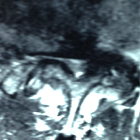 An AARP article that discusses common surgeries to avoid – including spinal fusion – has recently made its way back into the headlines. Specifically, it cites studies that show the frequency of this procedure has increased 1,400 percent between 2002 and 2007, and does not appear to be slowing down. The article suggests that the surgery is dangerous and is no more effective than physical therapy, which is inaccurate and misleading.
An AARP article that discusses common surgeries to avoid – including spinal fusion – has recently made its way back into the headlines. Specifically, it cites studies that show the frequency of this procedure has increased 1,400 percent between 2002 and 2007, and does not appear to be slowing down. The article suggests that the surgery is dangerous and is no more effective than physical therapy, which is inaccurate and misleading.
Spinal fusion involves the joining of two or more vertebrae together, using screws and rods along with bone graft material, and sometimes cages (devices that support the vertebra). These techniques provide strong support for the spine, as well as correction of alignment and protection of the spinal canal and nerves. While spinal fusion has increased in frequency, in my experience it is a safe and highly effective treatment for patients when performed properly and for the right diagnosis. The key to success is careful selection of the patients who need a fusion (i.e., performing the procedure for the correct diagnosis), and also performing the surgery carefully to achieve maximal success (i.e., achieving a solid fusion). Where patients and doctors get into problems is when the procedure is performed for a patient who didn’t really need a fusion, and when the fusion does not fully consolidate and become stable.
When a procedure has a rapid increase in frequency in a short period of time, it can be for multiple reasons. One is that the procedure has been shown to be safe and effective, and the techniques have become well known and standardized. Secondly, the technology has improved to the point where these procedures can be done more efficiently and with higher success. Finally, each year we train more surgeons in these techniques, thus spreading the frequency of application.
 However, just because a treatment is well known and available, does not mean it should be used routinely. The indications for spine fusion are relatively narrow and well defined. The primary indication is spondylolisthesis, or instability of the lumbar spine, and fusion is necessary to stabilize the unstable area. Secondly is scoliosis, which is a curvature of the spine leading to nerve compression, and fusion is necessary to straighten out the curvature and hold the spine upright. Spinal stenosis is a narrowing of the spinal canal that leads to back and leg pain with walking, and is one of the most common reasons for spinal surgery. This condition can most often be treated with laminectomy type surgery without needing a fusion, although there are exceptions and some cases do require fusion. Finally some patients with severe back pain and arthritis are also better treated with a fusion, and do get excellent improvement in their back pain.
However, just because a treatment is well known and available, does not mean it should be used routinely. The indications for spine fusion are relatively narrow and well defined. The primary indication is spondylolisthesis, or instability of the lumbar spine, and fusion is necessary to stabilize the unstable area. Secondly is scoliosis, which is a curvature of the spine leading to nerve compression, and fusion is necessary to straighten out the curvature and hold the spine upright. Spinal stenosis is a narrowing of the spinal canal that leads to back and leg pain with walking, and is one of the most common reasons for spinal surgery. This condition can most often be treated with laminectomy type surgery without needing a fusion, although there are exceptions and some cases do require fusion. Finally some patients with severe back pain and arthritis are also better treated with a fusion, and do get excellent improvement in their back pain.
If you have a chronic back condition and are in need of surgery, make sure you see a surgeon who treats a high volume of cases with your diagnosis, as that really makes a difference in outcomes. And understand that a fusion can give tremendous pain relief and improved quality of life and functionality when performed in the right setting.
What do you think about this study? We’d love to hear more about your experience – come share with us over on Facebook.
